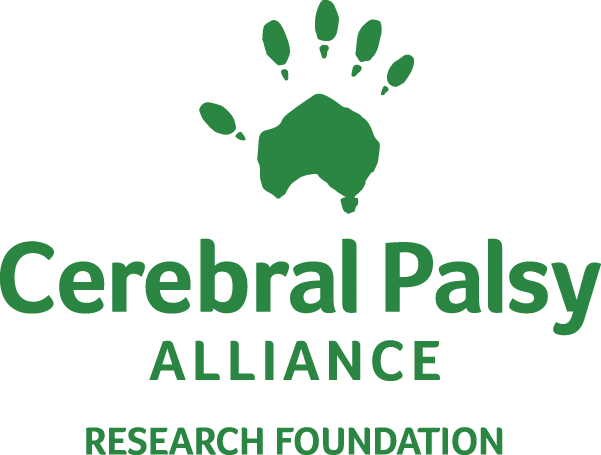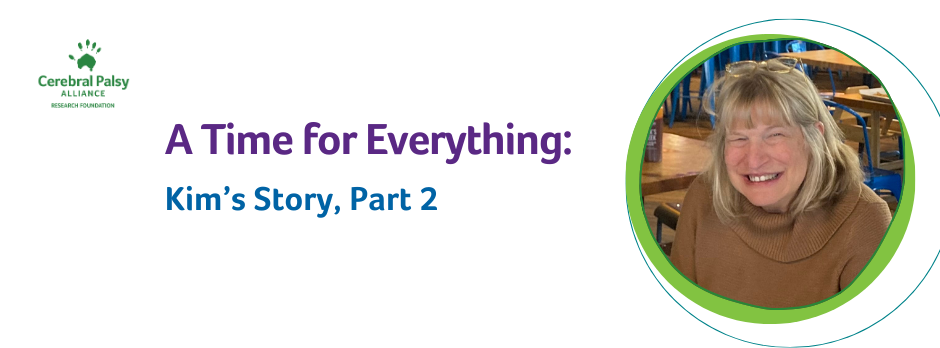
Becoming More Myself, Discovering Disability
By Katy Fetters
It’s taken me many years to recognize the reality that my lived experience with cerebral palsy is my greatest strength—it’s made me who I am in so many ways. I believe the world has so much to learn from the disability community and it’s my hope that I can shed some light on the personal musings and collective needs of our community through this two-part piece.
I’m inspired to share how my relationship with my disability has changed as I grew into adulthood. Upon revisiting my past, I realize how my self-perception was subtly riddled with shame around my body and the way I move in the world. For most of my life, I subscribed to the idea that cerebral palsy (CP) was something to overcome (ignore) through physical activity—proving I wasn’t disabled by going for a group hike, a long jog, or playing soccer like my siblings. I needed to prove that these legs could do everything everyone else’s did; that disability was not a ‘factor’ in my life. And I made sure it wasn’t—at least, not outwardly. I refused to wear an AFO or use a mobility aid because that would mean I needed help. I committed to running a half marathon, perhaps to run away from the reality that my body was slowing down. Yet I was 21 years old and I had fractured both feet in the span of a year. Suddenly, movement was different. I began to grapple with the fact that I did not, and could not move like everyone else. It sucked. But letting go of the idea that I had to pretend I was not disabled/not in pain was the best thing that I’d ever done for myself. It was exhausting and I hadn’t really addressed the emotional and physical toll it took on me.
So over the course of the last few years, my understanding of disability, of movement and being outdoors became less focused on keeping up and proving myself, and more focused on what feels good for my mind and body. Now, I’m less interested in challenging my body and its limitations and more attuned to experiencing my surroundings more intentionally and enjoyably. I have nothing to prove any longer and nothing to gain from pushing my body to the point of discomfort.
Yet even before I came to this realization, in the back of my mind whenever I was out on a hike, it bothered me when passers by said, “good for you!” or “you got this!” because I didn't need that validation. Even then, I knew I belonged on those trails however slowly I went or awkwardly I moved. It bothers me that I, and so many others like myself, are so unexpected out in nature and that we are still interrogated when using our accessible parking pass at a trailhead, gym, and elsewhere. To me, this shows that many people are still under the impression that disabled bodies don’t belong in nature or cannot be ‘active’ because they don’t check the same ‘mobility’ box that nondisabled bodies do. But movement looks different for everyone. Disability just forces us to embrace that fact a lot sooner in life than most. Yes, I move differently; yes, I wear a mobility device (the ExoSym); yes, I use an accessible parking pass; yes, I am active; yes, I am disabled.
Disability and movement are not mutually exclusive. Disability and the outdoors are not mutually exclusive. Disabled bodies belong everywhere.
Tue 16 Jul 2024
By Kim Greene Season of Confirmation With his affirmative comment and now wondering if indeed I had a neurological issue, I googled what I knew about my history. I knew that I had been adopted and born eight weeks early and had to be kept in the hospital until I was stable and weighed more […]
Wed 10 Jul 2024
Cerebral Palsy Alliance Research Foundation (CPARF) and CVI Now (part of the CVI Center at Perkins School for the Blind) are hosting a joint event on Thursday, July 25 from 5:30 pm to 6:30 pm ET. Launching CPARF’s new “CP &…” series, the event will dive deep into the connections between cerebral palsy (CP) and […]




